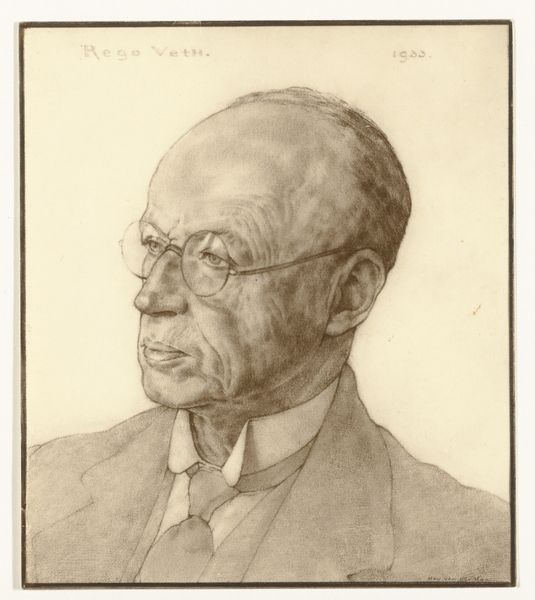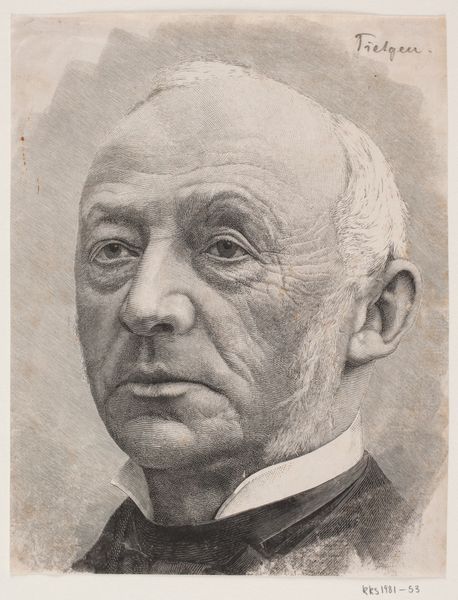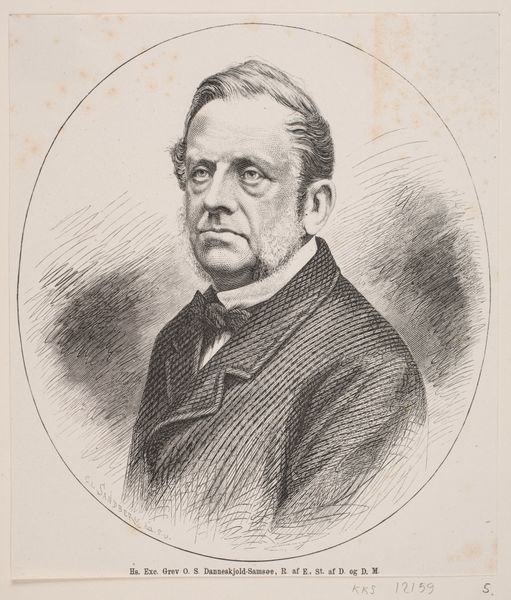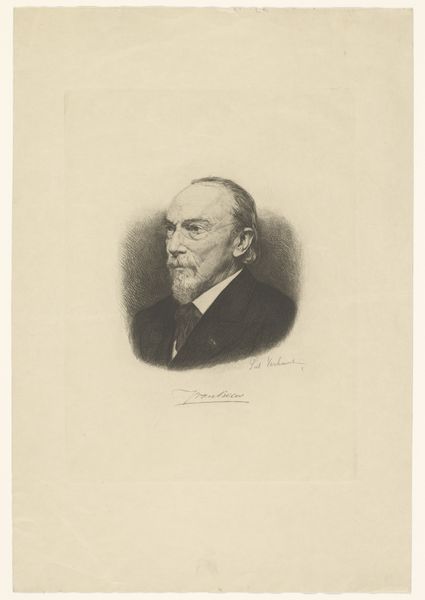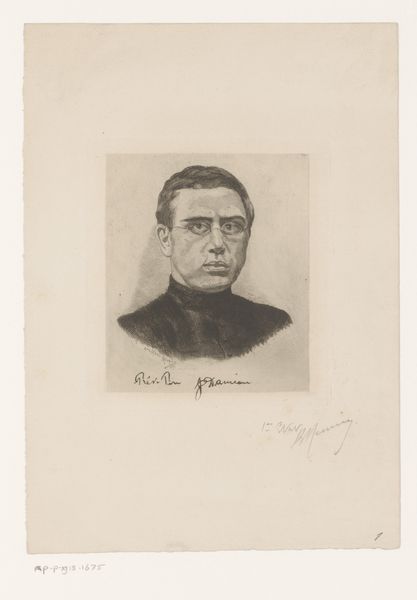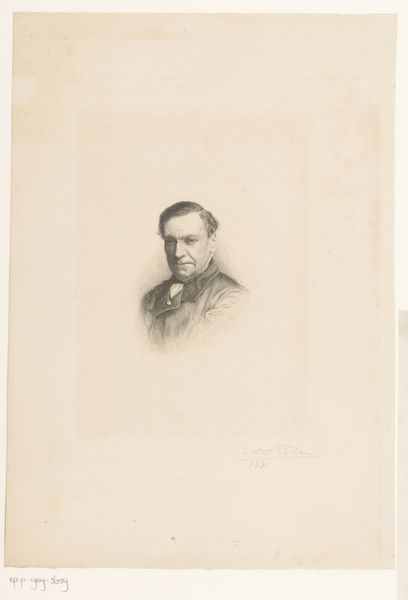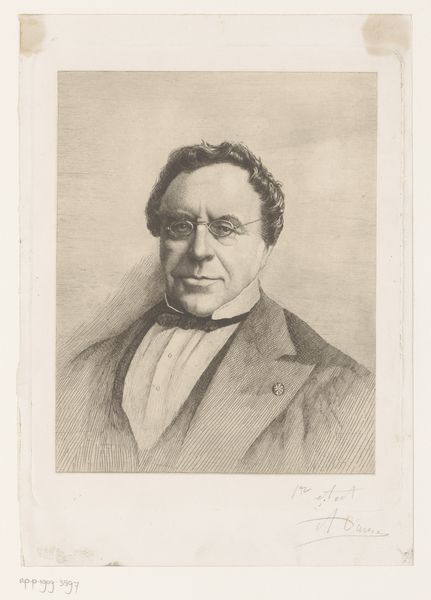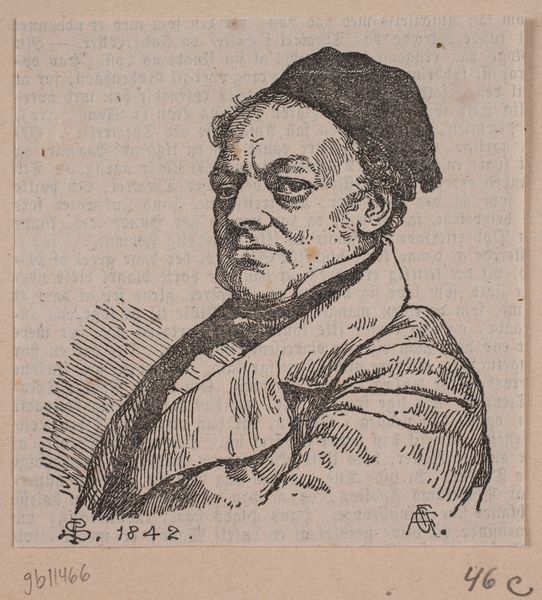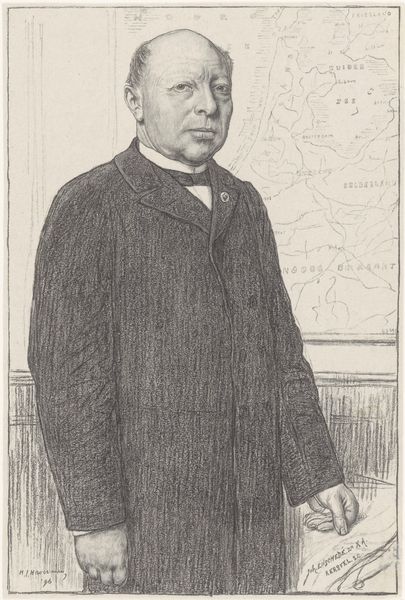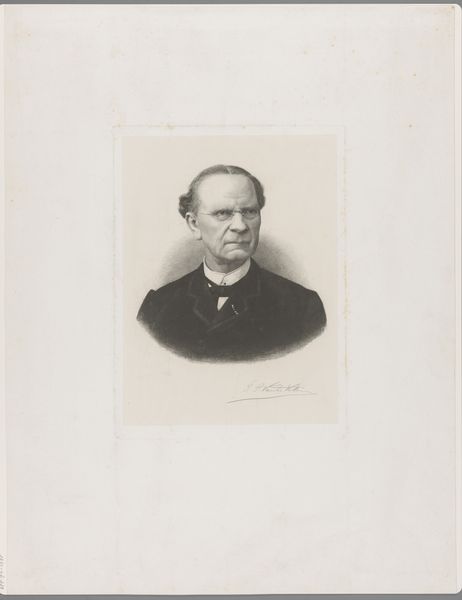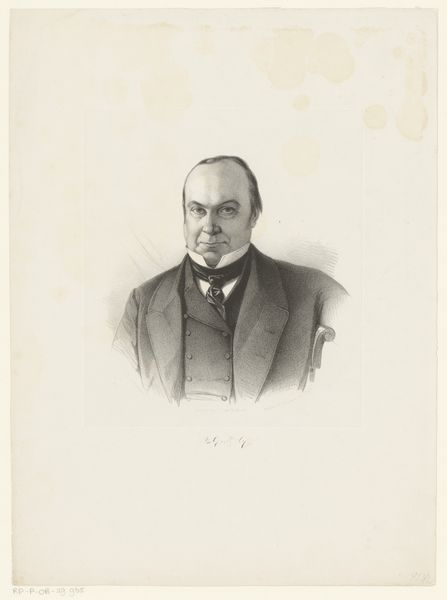
print, engraving
#
portrait
# print
#
engraving
#
realism
Dimensions: 271 mm (height) x 241 mm (width) (billedmaal)
Editor: Here we have an engraving from 1894, simply titled "Jonas Lie." It looks like a portrait, and the detail achieved through the engraving technique is amazing. He has a very intense gaze. What can you tell me about this piece? Curator: The prevalence of engraved portraits like this in the late 19th century tells us much about the democratization of imagery. Before photography became widespread and affordable, engravings were a primary means for disseminating images of prominent figures, allowing a wider public to visualize and engage with individuals shaping their society. Who do you think the audience would be for a print like this? Editor: I'd guess perhaps people who admired Lie and wanted to have a representation of him? Maybe fellow artists? Curator: Exactly. These prints functioned almost like early forms of publicity, shaping public perception and solidifying the subject’s status. The meticulous detail achieved through engraving lends the image an air of authority and importance. Note the sharp lines, precise shading, and the realistic depiction of Jonas Lie’s features, conveying a sense of truth and objectivity. Consider where this print might have been displayed. Editor: I can imagine it in a study, or perhaps in a public space like a library or even displayed for sale in a print shop. It would be a way to signal his importance, almost like a photograph might be today. Curator: Precisely. And consider the social role Lie himself played. He wasn’t royalty, he was an artist. So, this elevation speaks to the changing social values and the rising status of artists in the public imagination during that era. It speaks volumes about the cultural priorities. Editor: I never thought about engravings as early forms of social media! Thanks, that gives me a lot to think about.
Comments
No comments
Be the first to comment and join the conversation on the ultimate creative platform.
